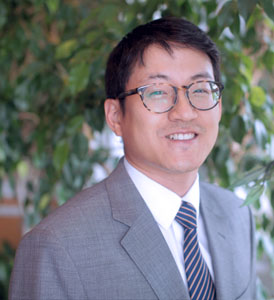Posted on May 4, 2018

Last week, as I sat listening to a panel of Newark students discussing what they want out of school at the City of Newark’s chronic absenteeism summit, I heard words that are not often heard in a high school setting. Students talked about how important it was to feel loved and cared for by adults in the school, how they needed teachers and staff who could relate to their cultural backgrounds and not just act as authoritative figures for four years. In short, they wanted school to feel “like Grandma’s house.” Their comments echoed what we learned in preparing our October 2017 report on Newark’s high school chronic absenteeism –caring adults in the school building make a big difference in student attendance patterns and school engagement.
These words are in contrast to most existing high school models and structures, which focus heavily on subject-matter content and an industrial-era system of strict periods and bells. In fact, the students seemed to be asking for a more “developmentally appropriate practice” that is commonplace in preschool and kindergarten classrooms.
- Knowing child development and learning
- Knowing what is individually appropriate, and
- Knowing what is culturally important.
Although these basic factors are more often geared towards young children, they can also be applied in high school, when absenteeism is often the most prevalent. We know that high schoolers and adolescents lead complex emotional lives, especially if they have had experience with trauma. Yet the curriculum and pedagogy in high school often focuses on learning biology content rather than on healthy emotional development.
Of course, content-area knowledge is extremely important; building academic skills is still and always will be a core goal of secondary education. But what the Newark high school students shared that day is what common sense often tells us: students who do not feel welcome, safe and cared for in their schools will be less likely to succeed academically and more likely to disengage from school entirely.
“Developmentally appropriate” classrooms in preschool and early elementary grades reflect this more updated understanding of child brain development. Rather than demand memorization and rote skills, a developmentally appropriate preschool experience focuses on creative and instructive play, developing a love of books and stories and nurturing inquisitive young minds. This practice is not reflected in many high school settings.
At the absenteeism summit, speakers discussed the need to “reinvent” school for the 21st century – to develop more authentic learning experiences, to support students’ social and emotional health and to build lessons that connect to students’ cultural backgrounds. So many of these lessons have already been implemented at the preschool level. State-funded preschools are required to be evidence-based programs, and teachers receive extensive training on child development, which utilizes a “developmentally appropriate” structure. New Jersey’s robust preschool learning standards (PDF) show what is possible when an education system focuses on the whole child.
We may not hear much about “love” amid discussions of PARCC testing and career readiness in high schools, but as high school teachers and administrators listen to youth voices, they may find that high schools can learn a surprising amount from early childhood models.

